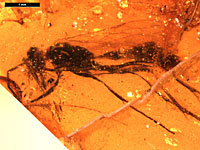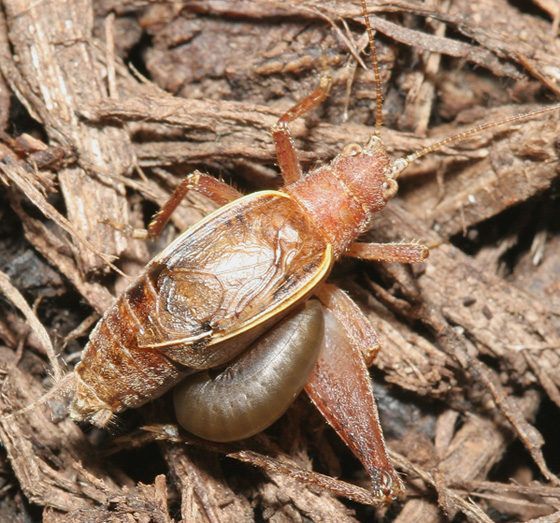This website is dedicated to the wasp family Rhopalosomatidae (Hymenoptera).
Recent diversity and distribution: The recent fauna of the family currently consists of four genera, and its distribution is largely limited to the subtropics and tropics. Within the family there exist two clearly different morphological forms – the brachypterous/apterous Olixoninae (Olixon) and the macropterous Rhopalosomatinae (Liosphex, Paniscomima and Rhopalosoma). Surprisingly the most widespread genus is Olixon (with 28 species) whose members occur in Australia, Africa and North and South America (Krogmann et al. 2009, Lohrmann et al. 2012). Liosphex currently comprises 14 species in Southeast Asia and North and South America (Lohrmann & Ohl 2010). The 13 known species of Paniscomima occur in Africa and Southeast Asia (Guidotti 2007, Lohrmann 2011) whereas the distribution of Rhopalosoma (17 species) is restricted to the New World (Townes 1977).
|
Although the family has been quite rare in collections for a long time, the number of specimens available for study has increased rapidly in the last 30 years as a result of the use of non-selective traps and several large-scale biodiversity inventory projects. Fossil record: The family probably originated in the late Jurassic (Brady et al. 2009) or early Cretaceous (Wilson et al. 2012) and four fossil taxa are currently assigned to the family, the oldest dating back to the early/mid Cretaceous (Nel et al. 2010). |
 |
| © Lohrmann 2012 |
Systematic placement: The family belongs within the Vespoidea but the exact phylogenetic position is still part of controversial discussions. In the recent past the following taxa have been published as potential sister groups of Rhopalosomatidae:
a) On morphological data: Pompilidae (Brothers 1975, Brothers 1999) or a clade comprising (Bradynobaenidae + (Formicidae + (Vespidae + Scoliidae))) (Brothers & Carpenter 1993),

b) on molecular data: Vespidae or Sierolomorphidae (Pilgrim et al. 2008, Debevec et al. 2012),
c) on a combined approach of molecular and morphological data: Vespidae (Pilgrim et al. 2008).
 |
Biology: As far as is known, members of the family are ectoparasitoids of crickets (Hood 1913, Gurney 1953, Townes 1977). |
| © Roy Sigafus 2008 |
